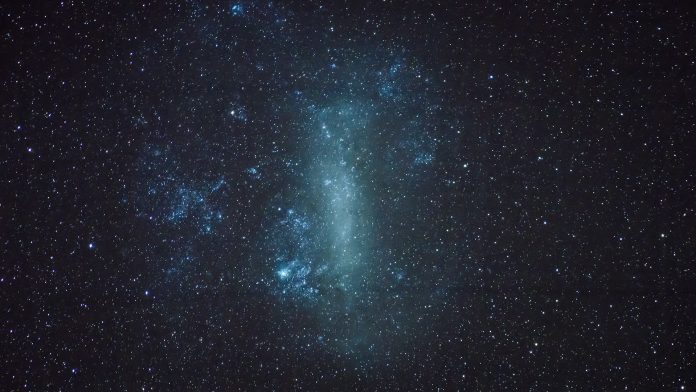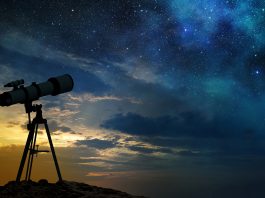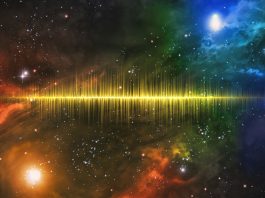An international team of astronomers have conducted an in-depth investigation of the Large Magellanic Cloud, identifying radio waves for the first time ever.
The research team, comprised of scientists from the UK’s Keele University and the Macquarie University in Sydney, has successfully examined the Large Magellanic Cloud satellite galaxy at radio wavelengths, in addition to an array of other stars and distant galaxies.
The team, led by Clara M. Pennock, a PhD student at Keel University, and Dr Jacco van Loon, a reader in astrophysics, utilised the state-of-the-art Australian Square Kilometre Array Pathfinder (ASKAP) telescope to make their discovery. This cutting-edge technology enabled the team to capture the Large Magellanic Cloud at radio wavelengths, providing the experts with an insight into its internal structure. The radio images procured are the sharpest ever of the Large Magellanic Cloud.
What is the Large Magellanic Cloud?
The Large Magellanic Cloud is a satellite dwarf spiral galaxy comprised of tens of millions of stars that borders the Milky Way and is situated around 158,200 light-years from Earth Due to the Large Magellanic Cloud being located so close to the Milky Way, it provides scientists with a perfect opportunity to investigate some of the fundamental queries of the Universe, such as how stars form, and galaxies are structured.
In addition to radio images of the Large Magellanic Cloud, the team also analysed the stars that formulate the galaxy’s structure, including the Tarantula Nebula, which is the most active region of star-formation in the local group. The team also detected radio emissions from distant galaxies in the background and foreground of the Milky Way.
Objectives of the investigation
The study is part of the Evolutionary map of the Universe (EMU) project, an endeavour that will analyse the Southern sky in its entirety and detect around 40 million galaxies, which will be employed to develop our understanding of the life cycle of stars and galaxies.
Clara Pennock, the lead author of the study from Keele University, said: “The sharp and sensitive new image reveals thousands of radio sources we’ve never seen before. Most of these are actually galaxies, millions or even billions of light-years beyond the Large Magellanic Cloud.
“We typically see them because of the supermassive black holes in their centres which can be detected at all wavelengths, especially radio. But we now also start finding many galaxies in which stars are forming at a tremendous rate. Combining this data with previous observations from X-ray, optical, and infrared telescopes will allow us to explore these galaxies in extraordinary detail.”
Dr Jacco van Loon, a Reader in Astrophysics at Keele University, said: “With so many stars and nebulae packed together, the increased sharpness of the image has been instrumental in discovering radio-emitting stars and compact nebulae in the Large Magellanic Cloud. We see all sorts of radio sources, from individual fledgling stars to planetary nebulae that result from the death of stars like the Sun.”
Co-author Professor Andrew Hopkins, from Macquarie University and leader of the EMU survey, commented: “It’s gratifying to see these exciting results coming from the early EMU observations. EMU is an incredibly ambitious project with scientific goals that range from understanding star and galaxy evolution to cosmological measurements of dark matter, dark energy and much more. The discoveries from this early work demonstrate the power of the ASKAP telescope to deliver sensitive images over wide areas of the sky, offering a tantalising glimpse of what the full EMU survey may reveal. This investigation has been critical in allowing us to design the main survey, which we expect will start in early 2022.”









